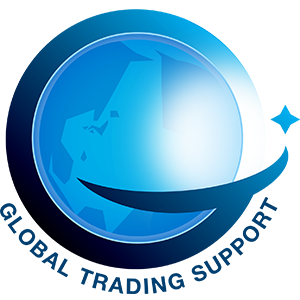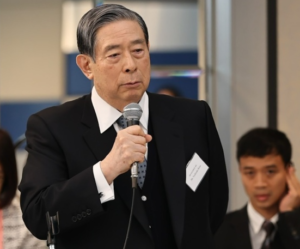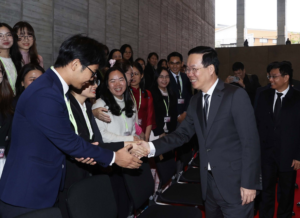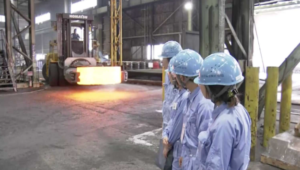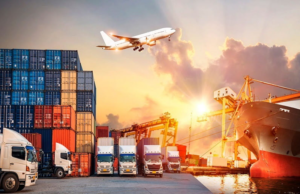

Hoa anh đào bắt đầu nở từ cuối tháng 3, rộ sau khoảng 8 ngày và Kochi là nơi hoa nở sớm nhất. Tập đoàn
CEO Tập đoàn SBI Holdings nói coi Việt Nam là điểm đến hấp dẫn và muốn hợp tác xây dựng hệ sinh thái lĩnh vực sản
Đại học Kyushu, một trong 5 đại học công lập hàng đầu ở Nhật Bản, dự định mở rộng đào tạo và tiếp nhận du
Tình trạng thiếu lao động nghiêm trọng đang ảnh hưởng đến nền kinh tế Nhật Bản. Tuy nhiên, tỉnh Shiga ở phía tây
Theo số liệu thống kê sơ bộ mới nhất của Tổng cục Hải quan cho thấy tổng trị giá xuất nhập khẩu hàng hóa của
Hoa anh đào bắt đầu nở từ cuối tháng 3, rộ sau khoảng 8 ngày và Kochi là nơi hoa nở sớm nhất. Tập đoàn
CEO Tập đoàn SBI Holdings nói coi Việt Nam là điểm đến hấp dẫn và muốn hợp tác xây dựng hệ sinh thái lĩnh vực sản
Đại học Kyushu, một trong 5 đại học công lập hàng đầu ở Nhật Bản, dự định mở rộng đào tạo và tiếp nhận du
Tình trạng thiếu lao động nghiêm trọng đang ảnh hưởng đến nền kinh tế Nhật Bản. Tuy nhiên, tỉnh Shiga ở phía tây
Theo số liệu thống kê sơ bộ mới nhất của Tổng cục Hải quan cho thấy tổng trị giá xuất nhập khẩu hàng hóa của
